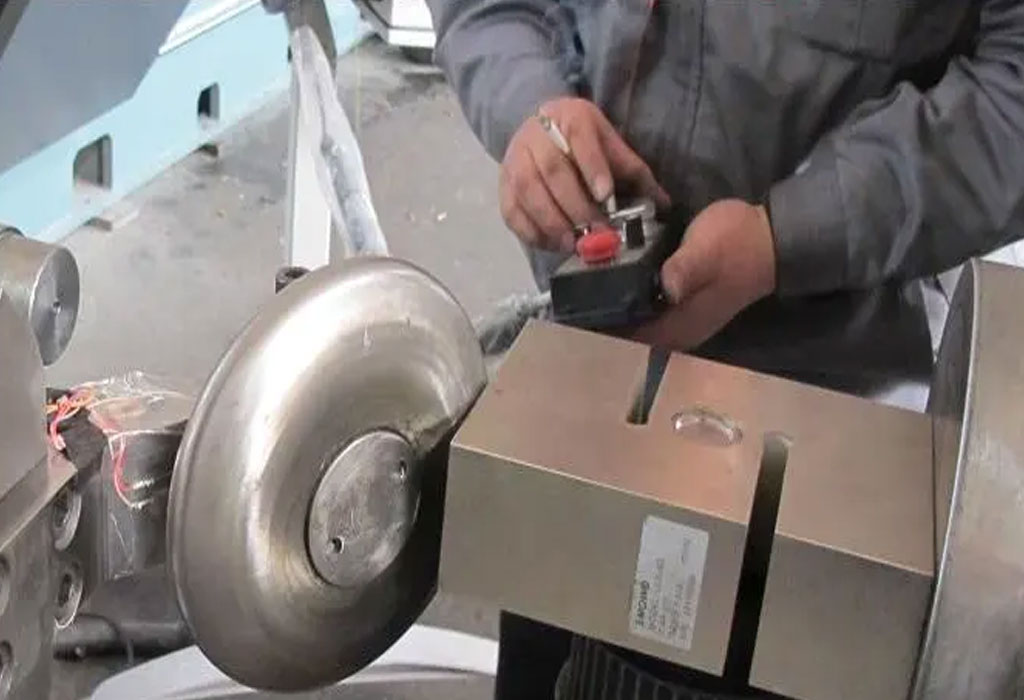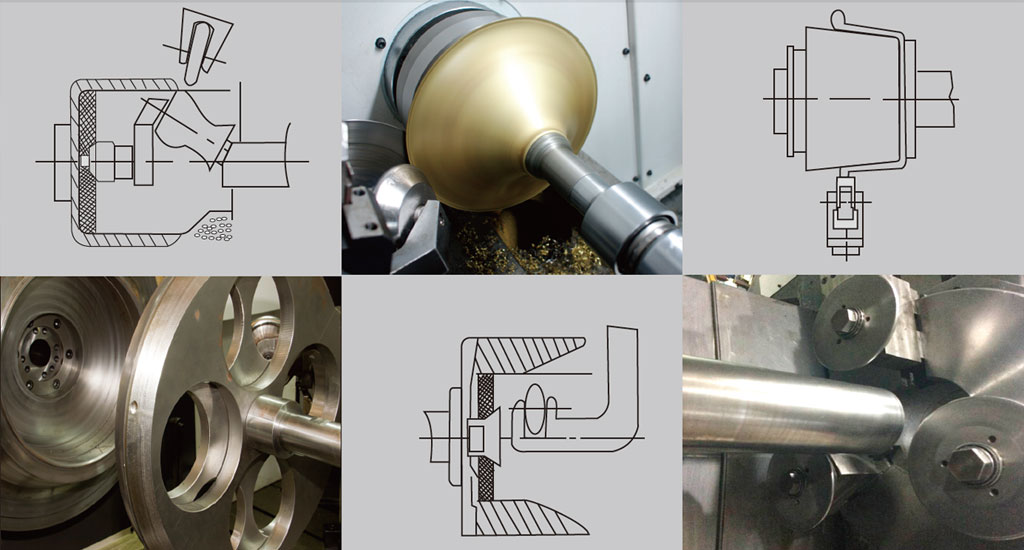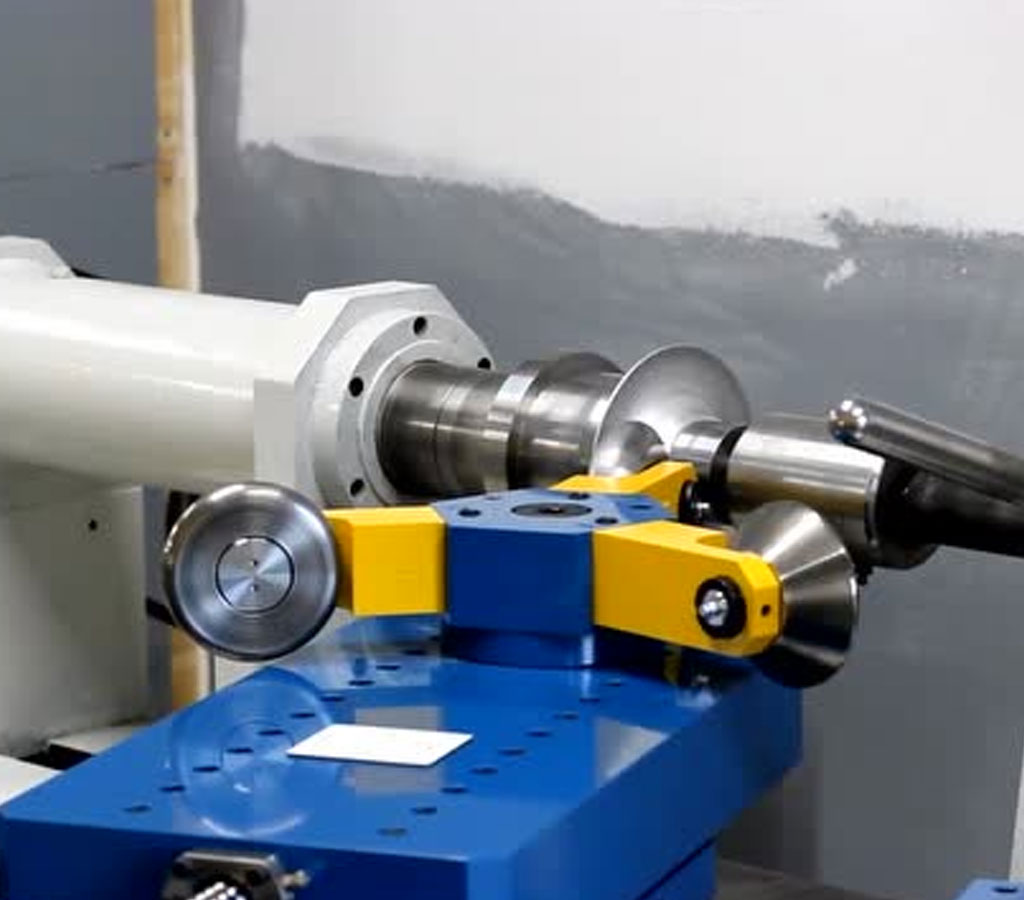Die Manufacturing
Metal spinning, also known as spin forming or metal turning, is a versatile metalworking process that involves shaping a metal disc or tube by rotating it on a lathe while pressing it against a tool (known as a mandrel or form block). At the heart of this process lies the metal spinning die, a crucial component that determines the precision, efficiency, and quality of the final product.
Metal spinning dies serve as the primary means of transferring the desired shape and dimensions onto the workpiece during the spinning process. They are meticulously crafted to accommodate various materials, thicknesses, and complexities, ensuring seamless production across diverse industries. From aerospace components to architectural fixtures, metal spinning dies play a pivotal role in shaping modern manufacturing landscapes.

Manufacturing metal spinning dies demands a blend of artistry and precision engineering. The process typically begins with detailed design specifications, which are translated into CAD (Computer-Aided Design) models. These models serve as the blueprint for machining the die components with utmost accuracy. Machinists utilize advanced CNC (Computer Numerical Control) machines to fabricate dies from robust materials such as tool steel or hardened aluminum, ensuring durability and dimensional stability.
In recent years, advancements in machining technologies have revolutionized metal spinning die manufacturing. High-speed machining (HSM), for instance, enables faster material removal rates and enhanced surface finishes, optimizing die performance and longevity. Additionally, the utilization of additive manufacturing techniques, such as laser powder bed fusion or selective laser melting, has opened up new possibilities for creating intricate die geometries with unprecedented precision.
The Type Of Metal Spinning Molds

Metal spinning molds, also known as spinning tools or forms, are crucial components in the metal spinning process, dictating the final shape and dimensions of spun parts. There are several types of metal spinning molds, each designed for specific applications and geometries. Here are some common types:
- Block or Mandrel Forms: Block forms, also known as mandrels, are solid tools used in metal spinning to shape the outer surface of the workpiece. They come in various shapes and sizes, depending on the desired final geometry of the spun part. Block forms can be made from materials such as steel, aluminum, or even plastic, depending on the requirements of the spinning job.
- Segmented Forms: Segmented forms consist of multiple pieces or segments that can be adjusted to create complex shapes or accommodate varying diameters. These forms offer flexibility and versatility, making them suitable for producing parts with intricate designs or irregular contours. Segmented forms are commonly used in industries such as aerospace, automotive, and lighting.
- Composite Forms: Composite forms combine different materials to optimize performance and durability. For example, a composite form may feature a steel core for rigidity and stability, coated with a layer of non-marring material such as rubber or plastic to prevent scratching or marring of the workpiece surface. Composite forms are often used when working with delicate materials or when precise surface finishes are required.
- Multi-Spindle Forms: Multi-spindle forms consist of multiple mandrels or blocks arranged in a single fixture, allowing for simultaneous spinning of multiple parts. This setup increases production efficiency and throughput, making it ideal for high-volume manufacturing applications. Multi-spindle forms are commonly used in industries such as automotive, HVAC, and appliance manufacturing.
- Custom Forms: Custom forms are tailored to specific spinning applications, taking into account factors such as material type, part geometry, and production volume. These forms are typically designed in collaboration with the customer or based on detailed specifications to ensure optimal performance and accuracy. Custom forms offer flexibility and precision, making them suitable for a wide range of industries and applications.
- Reconfigurable Forms: Reconfigurable forms are designed to be easily adjusted or modified to accommodate different part geometries or production requirements. These forms may feature interchangeable components or adjustable features that allow for quick changes without the need for extensive retooling. Reconfigurable forms offer versatility and cost-effectiveness, particularly in industries with diverse product lines or fluctuating demand.
- Combination Forms: Combination forms integrate multiple functionalities into a single tool, allowing for simultaneous shaping, trimming, or forming operations. These forms streamline the spinning process and reduce the need for secondary operations, resulting in faster production times and improved efficiency. Combination forms are commonly used in applications where tight tolerances and complex shapes are required.
The choice of metal spinning mold depends on factors such as part geometry, material properties, production volume, and desired surface finish. By selecting the appropriate type of mold and optimizing its design and configuration, manufacturers can achieve precise, high-quality spun parts across a wide range of industries and applications.
China Top Metal Spinning Die And Molds Manufacturing Expert
Are you looking to produce prototypes or need a full production batch? Whatever the case, we offer custom mold making capabilities that guarantee the success of your production processes. Our manufacturing facilities are equipped with sophisticated and precise machines which are capable of bringing your designs to life. We also work with any method or material for mold making you wish to have on your project.
Mold Design
Mold design services to meet all your expectations regarding cost, materials and quality.
- Cost
- Materials
- Quality
Mold Making
We use high-tech machines and techniques to achieve even the tightest tolerances in our molds.
- 10+ metals
- 40+ High precision Machines
- 20+ surface finishes
- Tolerance: 0.003 mm
Quality Control
Our commitment to excellence ensures the implementation of quality control across every production stage. We provide in-house and on-site quality control (QC) procedures to ensure the quality of your custom parts.
- Tolerance: minimum 0.003mm
- Lead times from 1 day
Mold trial & Spun Forming
Our designing and manufacturing experts manufacture top-notch economical custom spun metal parts using advanced equipment.
- Tolerance: minimum 0.1mm
- MOQ: 1 to 5 M parts
At Be-Cu spinning company, we’re dedicated to bringing your metal spinning project related ideas to life. Our team of creative spun forming manufacturing experts is always available to execute your project in the most efficient ways. Be it spun prototyping or full-blown production, we’re your best choice to work with.Reach out to us, and our team of experts will navigate every step of the way with you.
Summarize
The effectiveness of a metal spinning die hinges on its ability to withstand rigorous spinning operations while maintaining dimensional integrity. To achieve this, die manufacturers employ various heat treatment processes, such as annealing or surface hardening, to enhance the die’s hardness and resistance to wear. Furthermore, surface coatings and treatments, such as nitriding or diamond-like carbon (DLC) coatings, are applied to mitigate friction and prolong die lifespan, ultimately optimizing production efficiency and reducing downtime.

One of the hallmarks of modern metal spinning die manufacturing is its adaptability to diverse production requirements. Die manufacturers work closely with clients to tailor dies to specific applications, taking into account factors such as material properties, part geometry, and batch sizes. Whether it’s prototyping a new component or scaling up production volumes, custom-designed metal spinning dies offer unparalleled flexibility and cost-effectiveness.
Despite its advancements, metal spinning die manufacturing is not without its challenges. Achieving uniform material flow, minimizing thinning, and preventing wrinkles are perennial concerns that demand continuous innovation. Fortunately, ongoing research in material science, process optimization, and die design methodologies is paving the way for novel solutions. From intelligent toolpath algorithms to predictive modeling techniques, the future of metal spinning die manufacturing holds promise for enhanced efficiency and quality.
Metal spinning die manufacturing stands at the intersection of tradition and innovation, blending craftsmanship with cutting-edge technologies to shape the products of tomorrow. As industries evolve and demands grow more complex, the role of metal spinning dies will continue to be indispensable in driving manufacturing excellence. By embracing advancements, pushing boundaries, and fostering collaboration, the journey of metal spinning die manufacturing will undoubtedly leave an indelible mark on the landscape of modern industry.


